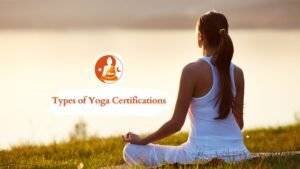Namaste, yoga enthusiasts! Are you prepared to lay out your yoga mat and launch yourself into the realm of warrior postures and downward dogs? I want to talk with you about what to bring to yoga class before you go. When it comes to your yoga practice, having the appropriate equipment may make a difference, regardless of whether you are an experienced yogi or a curious beginning.
We will take you through the fundamentals that will help you feel prepared, relaxed, and ready to discover your zen in this complete guide we have created for you below. So, take a moment to relax, and let’s discuss the essentials for the yoga class you should bring with you on your yoga adventure!
Table of Contents
ToggleThe Cornerstone of Your Practice: Your Yoga Mat
Before yaga class, you might be thing what to take to yoga class, right? When packing for a yoga class, bring your mat first. It’s your personal transformation space, not simply equipment. Your mat matters for several reasons. When choosing the right mat, consider the material (cork, PVC, TPE, and natural rubber are options), thickness (from small travel mats to thick cushiony mats), texture (smooth vs. textured), size (standard or longer for taller yogis), and durability.
Each individual has a different ideal mat, so try several kinds to discover your match. Buy a good mat—it’s the basis of your practice and may endure for years with appropriate maintenance. To maintain your mat, use a mild soap or mat cleaner to clean it frequently. Roll it up after air-drying and store it out of direct sunlight to avoid degeneration. Consider a mat bag for transport protection.
Hydration Station: Water Bottle Essentials
Yoga requires staying hydrated, making a water bottle a must-have. For a 60-90 minute class, use a 16-20 ounce bottle. Stainless steel cools water, while glass is eco-friendly. Try to avoid plastic. Choose a one-handed, leak-proof bottle. Double-walled bottles keep water chilled in class. Consider your preferred straw, spout, or wide-mouth opening.
After yoga, infuse your water with cucumber or lemon for a pleasant surprise! Hydration goes beyond class. Drink 16-20 oz of water 1-2 hours before class. Drink water as required during practice. Hydrate post-class with water or electrolytes.
Dressing for Success: Yoga Attire
What you wear to a yoga class affects your comfort and performance. For women, consider breathable, stretchy leggings or yoga pants, a supportive sports bra, and a fitted tank top or T-shirt. For men, flexible shorts or yoga pants and a breathable, fitted t-shirt or tank top are suitable. Fabric choices include synthetics that wick sweat, comfortable cotton for softer practices, and eco-friendly bamboo or repurposed materials.
Clothing should be loose enough to move in without being overly tight. Consider layering, mainly if studio temperature is unknown. Wear fitting, moisture-wicking garments first, use a lightweight, detachable, long-sleeved shirt, and bring a light jacket for post-class cooling.
Towel Talk: Managing Sweat
Yoga classes need a towel, particularly for hot yoga. Consider bringing a small face/hand towel and a bigger mat-covering yoga towel. Yoga towels with grip dots may stabilize your mat during sweaty workouts. For freshness, use quick-drying, antibacterial alternatives.
Props to Enhance your Practice
Although many studios supply props, bringing your own might be helpful. Important props include yoga blocks and straps. Yoga blocks help reach the floor in standing positions, support sitting positions, and aid alignment. Foam, cork, and wood blocks vary in size. Consider getting two for versatility. Yoga straps assist in stretching tight muscles, help in binding poses, and are great for improving flexibility over time.
Look for adjustable straps with durable buckles for longevity. Optional props include bolsters for restorative poses, blankets for extra cushioning or warmth, eye pillows for relaxation in Savasana, and yoga wheels for deeper backbends and stretches.
Personal Care Kit
To feel fresh and ready after class, consider packing a personal care kit. This could include deodorant, face wipes or cleanser, and hair ties and a brush. If you’re heading out after class, pack a change of clothes. Don’t forget flip flops for shower areas and a small towel for post-practice freshening up. A natural body spray or essential oil roller can provide a quick refresh.
Mindfulness Enhancers
To deepen your practice, you might want to bring some mindfulness enhancers. A small notebook and pen can be useful for post-practice reflections. Mala beads can aid in meditation, while a calming essential oil like lavender can help set the mood. Some practitioners find it helpful to bring a small crystal or meaningful object for focus during meditation. If you enjoy extended sitting practices, consider bringing a meditation cushion.
Nourishment for After-Class
Packing a light, healthy snack for post-yoga energy is a good idea. Fresh fruit, with bananas being a yogi favorite, is an excellent choice. Trail mix or energy bars provide quick, portable nutrition. Greek yogurt with a drizzle of honey offers a protein-rich option. Homemade energy balls made from dates, nuts, and seeds are another nutritious possibility. For electrolyte replenishment, consider bringing coconut water.
The Right Bag to Carry It All
Invest in a yoga-specific bag or backpack to carry all your essentials. Look for one with a strap or pocket for your mat, multiple compartments for organization, and breathable material to prevent odors. A water-resistant exterior provides protection against the elements, while comfortable straps ensure easy carrying. Consider the size based on your needs – a small bag for minimalists or a larger one if you bring multiple props.
Tech Considerations
While yoga is about disconnecting, some tech items can be helpful. A fitness tracker can monitor your heart rate, while a smartphone can be useful for yoga apps (but keep it on silent!). Wireless earbuds can enhance pre or post-class meditation, and a portable battery pack is handy for long days out. Remember to respect studio policies regarding technology use during class.
Seasonal Additions
Depending on the weather, don’t forget to add some seasonal items to your yoga bag. A light jacket or sweatshirt is useful for cooler days, while warm socks are essential for winter practices. If practicing outdoors, remember sunscreen, a hat, or sunglasses. For cold studio environments, hand warmers can provide extra comfort.
Studio Etiquette Essentials
While not physical items, there are essential things to bring to every class. These include an open mind, respect for fellow practitioners, and a willingness to try new things. Patience with yourself and others is crucial, as is maintaining a positive attitude throughout your practice.
Tips for Beginners: Who are Need to Yoga Class?
If you’re new to yoga, keep these points in mind:
- Start with the basics: mat, water bottle, and comfortable clothes
- Arrive early to set up and acclimate to the space
- Don’t be afraid to use props – they’re tools for improvement, not crutches
- Listen to your body, and don’t push beyond your limits
- Communicate with your instructor about any concerns or injuries.
Advanced Practitioner Additions
For those deeper into their practice, consider:
- A travel-friendly mat for yoga on the go
- Specialty props like yoga wheels or foam rollers
- A meditation cushion for extended sitting practices
- Advanced yoga texts or philosophy books for deeper study
- Personal aromatherapy blends for focus and relaxation
Eco-Friendly Yoga Gear
For the environmentally conscious yogi:
- Look for mats and props made from sustainable materials
- Opt for reusable water bottles and towels
- Choose organic cotton or recycled fabric clothing
- Use biodegradable mat cleaning wipes
- Invest in durable equipment that won’t need frequent replacement
Post-Practice Self-Care
To continue the benefits of yoga off the mat:
- Bring a reusable tea infuser and some calming herbal tea
- Pack a small foam roller for muscle release
- Consider a journal for reflecting on your practice
- Include a natural muscle balm for sore areas
- Bring a grounding essential oil blend for post-practice centering
Specialized Yoga Styles: Additional Considerations
Different yoga styles may require specific gear:
Hot Yoga:
- Extra towels
- Electrolyte supplements
- Change of clothes
Aerial Yoga:
- Grip socks
- Fitted clothing without zippers or buttons
Restorative Yoga:
- Extra layers for warmth
- Personal eye pillow
- Cozy socks
Final Thoughts
Now that you know what to bring to yoga class, you can confidently start. While the appropriate gear might improve your practice, your breath, purpose, and desire to progress are crucial.
Start with a decent mat, comfy clothing, and a water bottle, then add to your yoga equipment as you practice. Listen to your body and find materials that fit your practice—every yogi is different.
This list should help beginners discover what to bring yoga class and help seasoned yogis improve their gear. Now breathe, get your kit, and go on your mat for a profound yoga session. Inner tranquility and physical health await you.
More to Ask & Say!
A. Start with a good mat, comfy clothing, and a water bottle. Add more as you go.
A. Many studios supply mats, but bringing your own is cleaner and provides continuous support.
A. Breathable, elastic layers are easy to add and remove.
A. Props assist beginners in maintaining alignment and increasing flexibility.
A. A 16-20 oz water bottle is enough for a 60-90-minute practice, but hot yoga requires more.











